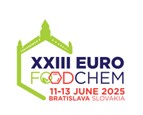Scientific journal
Journal of Food and Nutrition Research
Summary No. 2 / 2020
Guyon, F. – Da Costa, E. C. – Maurin, A. – Gaillard, L. – Landuré, M. – Gougeon, L.
Metabolomics applied to proton nuclear magnetic resonance profile for the identification of seven floral origin of French honeys
Journal of Food and Nutrition Research, 59, 2020, No. 2, s. 137-146
Francois Guyon, Service Commun des Laboratoires, 3 avenue du Dr. A. Schweitzer, 33680 Pessac, France. E-mail: guyonfra@gmail.com
Received 28 February 2020; 1st revised 28 April 2020; 2nd revised 12 May 2020; accepted 18 May 2020; published online 8 June 2020.
Summary: A sample preparation protocol was developed for honey profiling by proton nuclear magnetic resonance (1H NMR). The honey samples (0.5 g each) were solubilized in 5 ml of oxalate buffer (0.25 mol·l-1, pH 4.3). This solution (1 ml) supplemented with a lock solution (D2O, 0.1 ml) containing 3-(trimethylsilyl) propionic acid D4 sodium salt was used for analysis. The novelty of the proposed method consists in no need for subsequent pH adjustment. The developed method was used for the analysis of 212 French honeys split in seven floral origins (acacia, chestnut tree, scrub, colza, lavender, sunflower and honeydew). A soft independent modelling of class analogy (SIMCA) data treatment was applied to the 1H NMR spectra after a range scale pre-processing. The obtained class distance indicated successful discrimination between the seven floral origins, confirmed by a 100% correct classification when a honey test set was used. The model was applied to commercial mono-floral honeys and the results were fully corroborated by sensory and pollen analyses.
Keywords: oxalate buffer; honey floral origin; chemometric analysis; proton nuclear magnetic resonance
Download:
(pdf, 711.01 Kb, 1927x)










